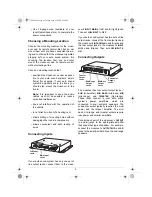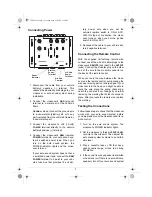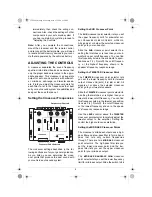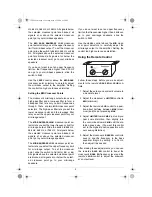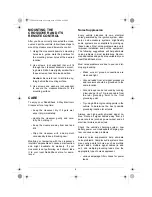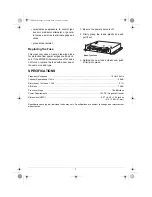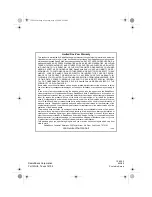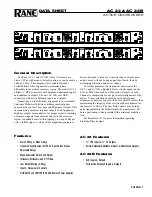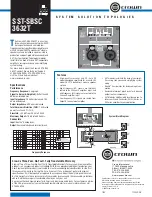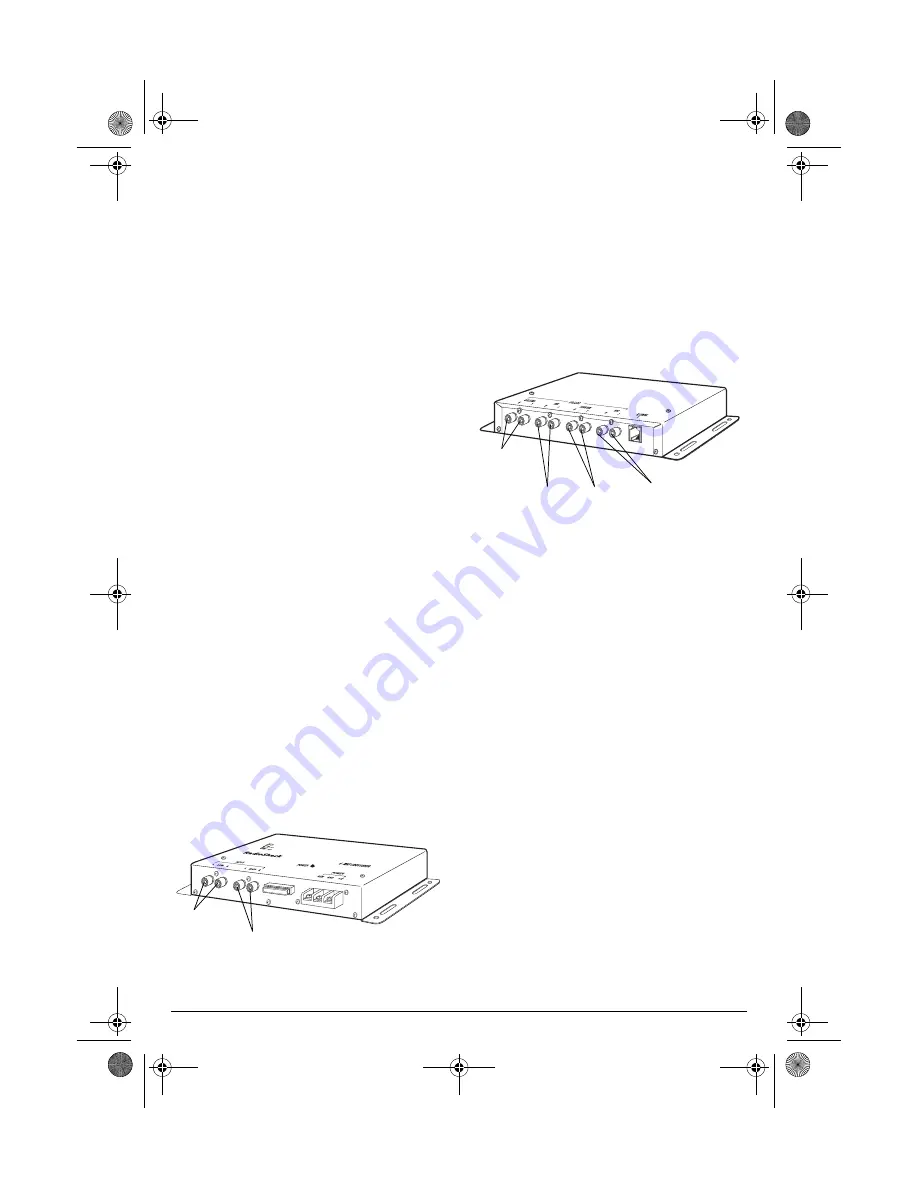
2
• Use 18-gauge wire (available at your
local RadioShack store) to complete the
power connections.
Choosing a Mounting Location
Choose the mounting location for the cross-
over and its remote control first, but do not
mount them until you have connected the wir-
ing and confirmed that the crossover operates
properly with your auto sound system. By
choosing the location first, you can later
mount the crossover and its remote control
without rerouting wires.
Choose a mounting location that:
• positions the crossover as near as possi-
ble to your auto sound system’s ampli-
fier(s) (for example, if your auto sound
system’s amplifiers are in the trunk, you
should also mount the crossover in the
trunk)
Note: It is important to keep the audio
cables as short as possible to reduce
noise and interference.
• does not interfere with the operation of
the vehicle
• is not directly in front of a heating vent
• allows drilling of mounting holes without
damaging other vehicle components
• allows convenient and safe routing of
wires
Connecting Inputs
If your auto sound system has only one set of
line output jacks, connect them to the cross-
over's
INPUT MAIN L
(left) and
R
(right) jacks.
Then set
LOW INPUT
to
OFF
.
If your auto sound system has two sets of line
output jacks, connect the front output jacks to
the crossover's
INPUT MAIN L
and
R
jacks and
the rear output jacks to the crossover's
INPUT
LOW L
and
R
jacks. Then set
LOW INPUT
to
ON
.
Connecting Outputs
The crossover has four sets of output jacks —
SUB
(subwoofer),
MID BASS
(mid-bass)
MID
(mid-range), and
TWEETER
(high-range).
These jacks connect to your auto sound
system's power amplifiers which are
connected to your system's speakers. The
subwoofer output typically requires the most
power and the largest amplifier. The mid-
bass, mid-range, and tweeter outputs require
less power and smaller amplifiers.
Connect each pair of the crossover’s
OUTPUT
(
L
and
R
) jacks to the appropriate amplifier
that drives that type of speaker. For example,
connect the crossover's
OUTPUT MID L
and
R
jacks to the amplifier that drives the mid-range
speakers.
Low Input
Jacks
Main Input
Jacks
Tweeter
Output
Jacks
Mid-Range
Output
Jacks
Mid-Bass
Output
Jacks
Subwoofer
Output
Jacks
12-2020.fm Page 2 Tuesday, May 23, 2000 6:56 PM


